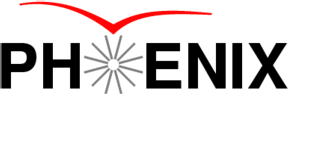Notes on PHENIX Software
Foundation software and platforms
The PHENIX software history and its evolution covers approximately 30 years. Two frameworks form its foundation:
- PISA: simulation framework based on Geant 3
- fun4all: reconstruction and analysis framework. Motivated by neccessity of integrating of code developed independently for many subsystems and bring it under one umbrella
The official operating system for PHENIX is Redhat Scientific Linux. This is the operating system installed on the machines in BNL SDCC (Scientific Data And Computing Center). The official shell supported is csh and its varieties like tcsh. Since certain parts of calibrations and conditions-type data are available within the file system mounted on these machines they effectively represent the only location where meaningful production and analysis can be performed.
PHENIX relies mainly on CVS for version control. Some components of the software (e.g. analysis) utilize a set of build tools which include automake, autoconf, libtool.
Containers
For produciton, PHENIX relies on containerization to maintain a stable computing environment (SL6-bases) which exists for a long period of time, which helps ensure complete reproducibility of results (e.g. DSTs) at the bit level. At the time of writing, containers are not used in analysis.
Standard Login Scripts and Software Directories
Assuming that the content of the user’s .cshrc and .login is trivial and does not interfere with the rest of the setup on needs to run the following to initialize the PHENIX computing environment:
source /opt/phenix/core/bin/phenix_setup.csh -n
The parameter -n wipes the existing PHENIX setup. In the PHENIX software environment, the /opt/phenix directory contains 3rd party libraries (like ROOT and GEANT4) needed to develop and run our code. The phenix_setup.csh script sets an environment variable OFFLINE_MAIN which points to the installation area for our libraries.
Useful Links
Archived presentations
A 2006 introduction to the PHENIX software framework
